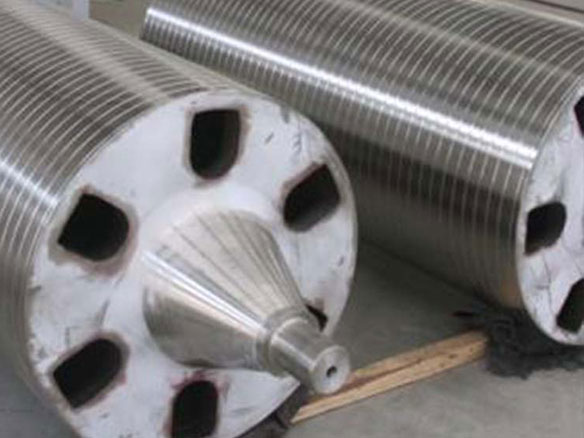



In the metallurgical industry, there are a variety of rollers and conveyor rollers need wear strengthening or repair, among them, cold strip continuous annealing furnace bottom roll is an important one. Cold-rolled strip steel depends on a set of rollers in furnace turn the implementation work, general of temperature in the annealing furnace of 450 ~ 1200 ℃
In the metallurgical industry, there are a variety of rollers and conveyor rollers need wear strengthening or repair, among them, cold strip continuous annealing furnace bottom roll is an important one. Cold-rolled strip steel depends on a set of rollers in furnace turn the implementation work, general of temperature in the annealing furnace of 450 ~ 1200 ℃, under the high temperature furnace roller continuous conveying steel strip, steel strip surface oxide film or deposition reduction of iron filings and activation, generate Fe, Fe3O4 and FeO and other compounds, with the roller surface under the action of friction, produce very big extrusion stress, If the protective film on the roller surface is destroyed, the exposed active metal surface will produce solid phase welding with the activated iron powder under compressive stress, resulting in nodulation on the roller surface, destroying the original roughness of the roller surface, and the strip will be scratched by nodulation, affecting the surface quality.
The phenomenon of nodulation on the roller surface is actually adhesive wear. In order to reduce the loss caused by nodular steel strip production, nicR-Cr3C2 coating can be sprayed on the roller surface by supersonic flame. It has the characteristics of high temperature oxidation resistance, thermal shock resistance and wear resistance, and can make the bottom rod work continuously for a long time at high temperature, and can withstand periodic thermal shock. When the furnace low roll operating temperature exceeds 900℃, a Co base alloy is sprayed.
In the metallurgical production line, a large number of conveying rollers are used to transport all kinds of steel, but wear and tear occurs after long-term use, which affects the quality of steel. The working temperature of the conveying roller is relatively low, and its surface can be sprayed with CO-based WC coating, which can generally work at 450℃ and has good wear resistance and comprehensive mechanical and mechanical properties.
Hypersonic flame spraying (HFRT) has unique advantages in spraying carbides cermet coatings, and carbide cermet coatings are widely used in metallurgical industry.
In addition, the sink roller on the hot dip galvanized line also needs to be protected by thermal spraying. The hot dip galvanized sheet has good corrosion resistance, processing formability, weldability and environmental protection, etc., which is widely used in various fields such as automobile, construction, home appliances and national defense. At present, the hot dipping zinc strip units of the world's iron and steel enterprises mostly use sink roll device. The sink roll and other components in the molten zinc production line are immersed in the molten zinc solution at 450~480℃, which is extremely easy to be corroded by the zinc solution with strong activity or precipitate fe-Al-Zn intermetallic compound nodular, resulting in pitting and pitting on the roll surface and becoming rough. Affect the surface quality of galvanized steel plate. In order to prevent alloying corrosion reaction caused by direct contact between liquid zinc and sink roller, which may cause coarsening of the surface of the steel roller and affect the quality of the galvanized steel plate, the surface of continuous galvanized sink roller is generally protected by spraying. The coating materials are WC-Co, Mo-Mo and Fe-Al thermal spraying powder. The corrosion resistance of WC-CO coating in zinc solution depends on its bonding phase. The diffusion corrosion channel of the zinc solution in the coating is mainly along the cobalt-rich phase. When the adhesive phase in the coating is mainly η phase (Co3W3C, Co6W6C, etc.), the η phase effectively prevents the diffusion of the zinc solution into the coating and delays the corrosion of the coating. On the other hand, the WC particle size and Co content in the coating also directly affect the corrosion resistance and service life of the coating. Coatings with fine WC grains and low Co content have higher wear resistance, while their corrosion resistance in liquid Zn is poor. Therefore, appropriate WC particle size and appropriate Co content should be selected to achieve better comprehensive performance. When WC grain size is 2~4μm and Co content is 10% ~ 17%, the coating performance is better.